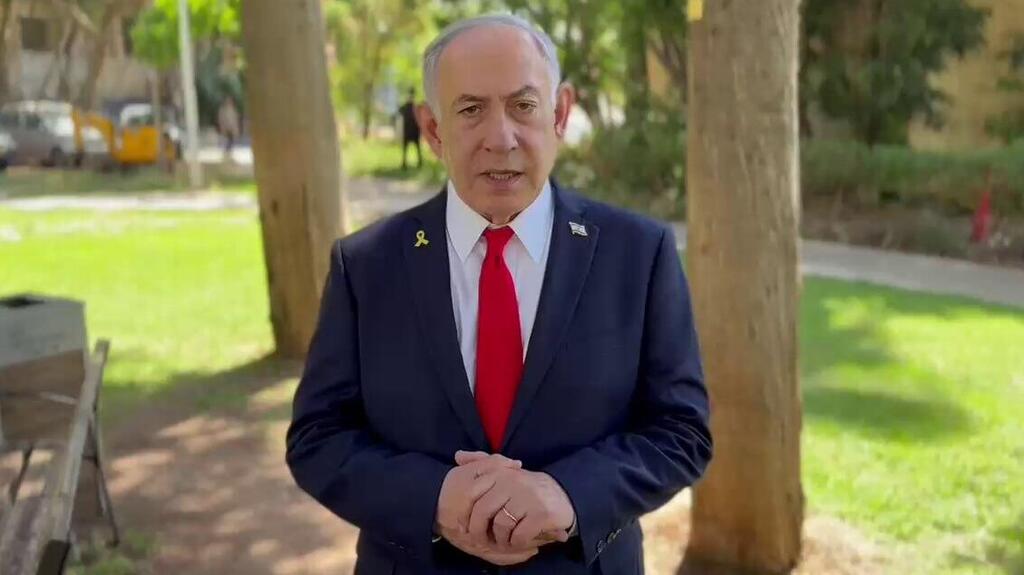The diplomats, traveling in armored vehicles, continued on their route after several missiles hit the defense ministry compound. The sources declined to reveal the diplomats’ identities or the number of people involved.
Meanwhile, Turkey’s Anadolu Agency reported Thursday that, according to Turkish security sources, Ankara played a key role in brokering Wednesday's ceasefire in Sweida. The sources said Turkey made every effort to calm tensions between the sides, and that the head of Turkish intelligence held talks with officials from the U.S., Syria, and Israel about recent developments.
Separately, Prime Minister Benjamin Netanyahu released a video Thursday explaining “what we did in Syria—and what we will continue to do there.” He stated: “We set a clear policy: demilitarization of the area south of Damascus, from the Golan to the Druze Mountain region—and protecting the brothers of our brothers, the Druze in the Druze Mountain. Both of these were violated by the Damascus regime. They sent troops into the demilitarized zone and began massacring Druze civilians. That was unacceptable to us in any form.”
“Therefore, I instructed the IDF to respond forcefully. The Israeli Air Force struck both the death squads and their armored vehicles. I added a target—Damascus itself: the Defense Ministry,” Netanyahu continued. “As a result of this powerful operation, a ceasefire took hold, and Syrian forces withdrew to Damascus. This is significant. It’s a ceasefire achieved through strength, not through pleading, not through begging, but through strength. We achieve peace through strength, quiet through strength, security through strength—on seven fronts.”
In addition to the strike on the Syrian Defense Ministry, the IDF also targeted the main entrance to the regime’s military headquarters complex in the Damascus area. Syrian reports later said that two additional strikes hit strategic buildings near central Umayyad Square—a location closely associated with the Syrian military’s general staff. One Syrian channel even claimed Israel had created a “ring of fire” around the general headquarters. Reports also emerged of a strike on the rear section of the People’s Palace, the official residence of President Ahmad al-Sharaa in Damascus.
According to the IDF, approximately 90 Israeli strikes were carried out across Syria. More than 100 missiles and bombs were launched from fighter jets and drones, targeting regime vehicles, tanks, and APCs. Preliminary military assessments suggest that the Syrian Army’s main command center sustained heavy damage and may have been destroyed.
Syrian President Ahmad al-Sharaa addressed the recent violent clashes in the Druze stronghold and Israel’s intervention on behalf of the Druze community—alongside the broader Israeli strikes—and accused: “The Zionist entity is trying to turn our land into a theater of chaos.” His comments came after the ceasefire took effect and several hours after his forces withdrew from Sweida.
Al-Sharaa added that Israel had “worsened the situation with its actions. Ever since the fall of the regime, Israel has sought to dismantle Syria. We have decided to entrust local factions and tribal leaders with maintaining security in the region. We chose not to be dragged into confrontations to preserve the nation’s stability. Syria is not a testing ground for foreign conspiracies or the ambitions of others. Building a new Syria requires us to focus on our own country.”


